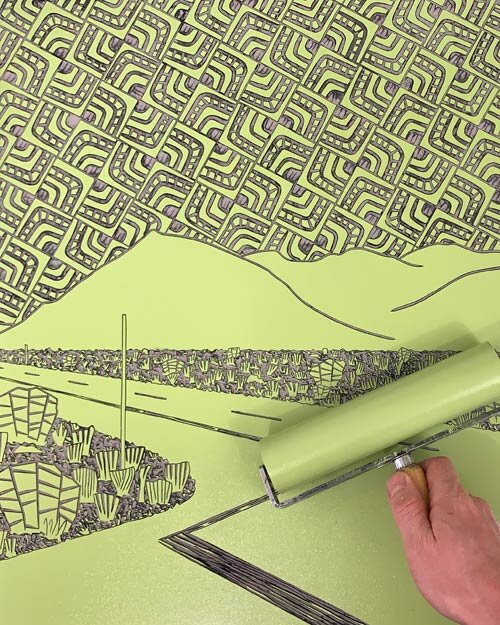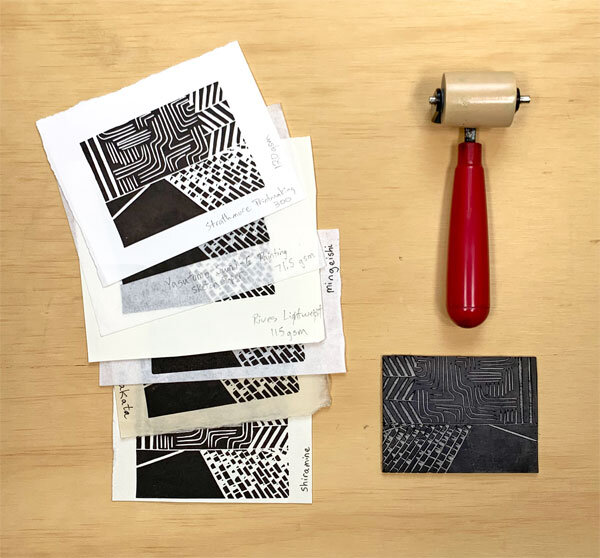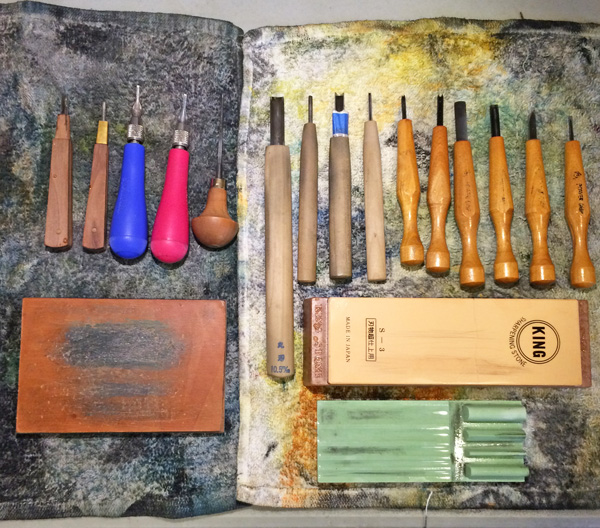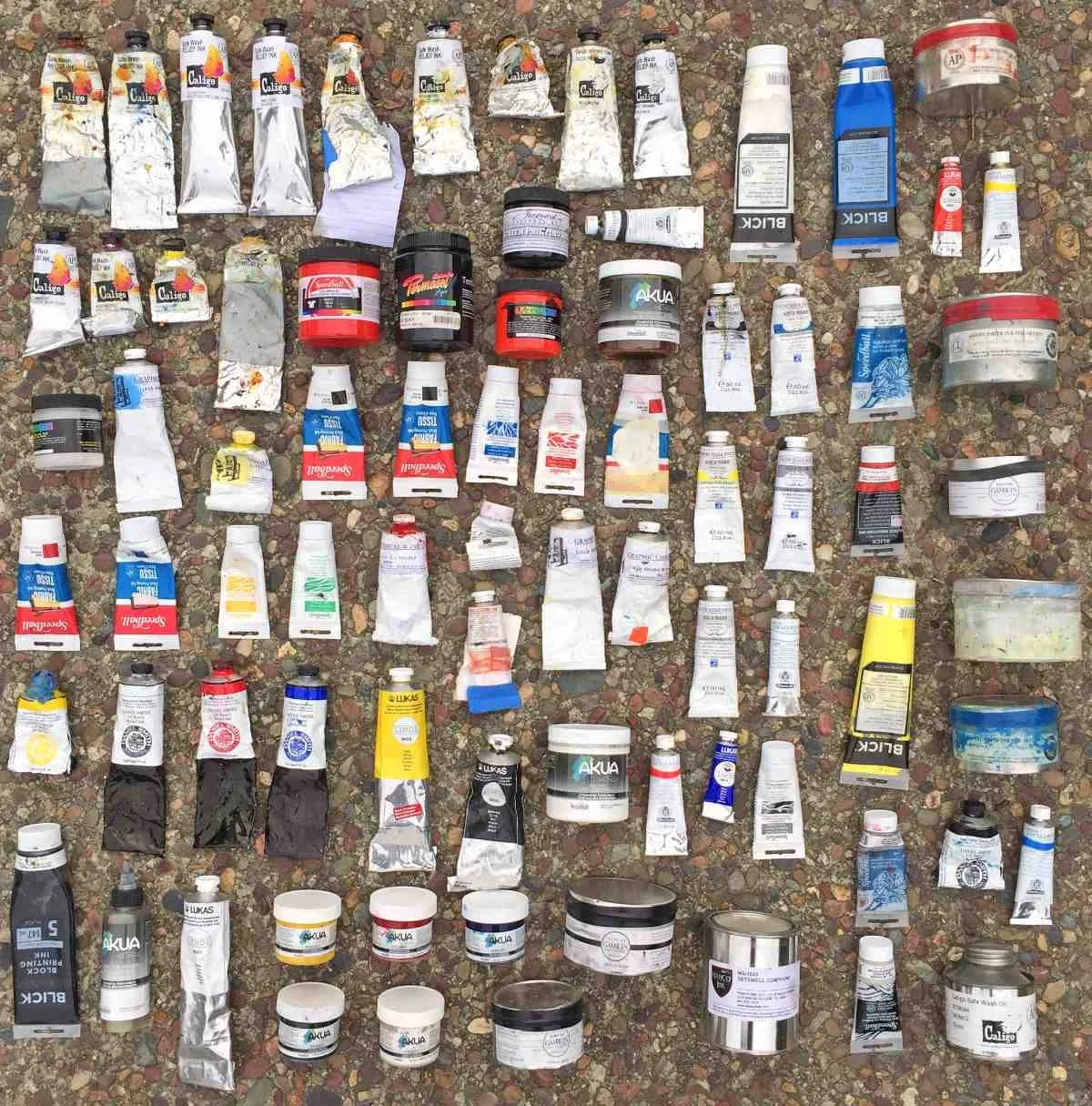In 2016, I did a large review of printmaking inks for use in linoleum block printing. One of the inks I tested was Akua Intaglio Ink. At the time, I gave it a “Honorable Mention” grade but said it wouldn’t be my first choice of ink.
Though it’s marketed as an intaglio ink, it’s not uncommon for printmakers to use Akua for relief printmaking and monotype. Last week, I stumbled upon some woodcuts I printed with Akua Intaglio Ink in 2016 and was disappointed to see that an oily halo had formed around some of the edges of the printed image.
Akua Intaglio Ink Review - Example of the Problem
You’ll notice the yellowy haze on the upper left section of the woodblock print. It’s almost as if the ink has separated. Interestingly, the halo doesn’t appear uniformly on the print. Perhaps certain ink colors are more problematic.
I’ve also found a linocut I printed as a side project in 2016 that has a similar oily haze around the edge of some prints. The prints on the thin paper have the oily halo, while the ones on heavier paper don’t. Also, the halo doesn’t appear by the black ink.
Importantly, these two affected prints were made in different printmaking studios, with different blocks, ink batches and papers.
I’m definitely not the first printmaker to have had this happen, as a reader alerted me to their problem with Akua and there are mentions of it online (here and here, for example). I checked out Speedball’s webpage for Akua Intaglio Ink and they actually mention this problem in their product FAQ. It seems like thin papers may be vulnerable to this problem, which would be consistent with my experience.
Over the years, I’ve rarely used Akua Intaglio Ink as I simply prefer other inks. It is popular, though, and seems to work for most people (the customer reviews at Blick and other retailers are good).
But, the ink does have this halo problem in limited situations. For that reason, I would be hesitant to recommend this ink for block printing, except for printing test prints and other work that doesn’t need to stand the test of time.







